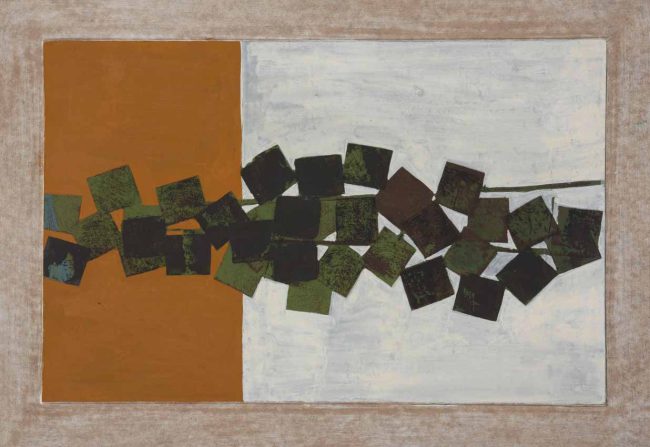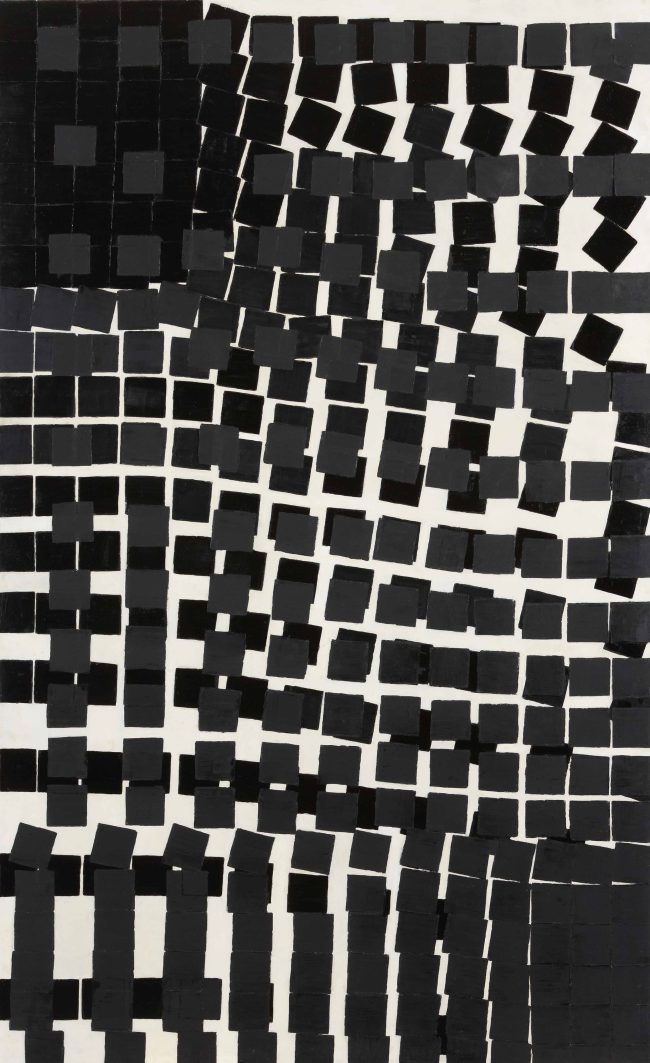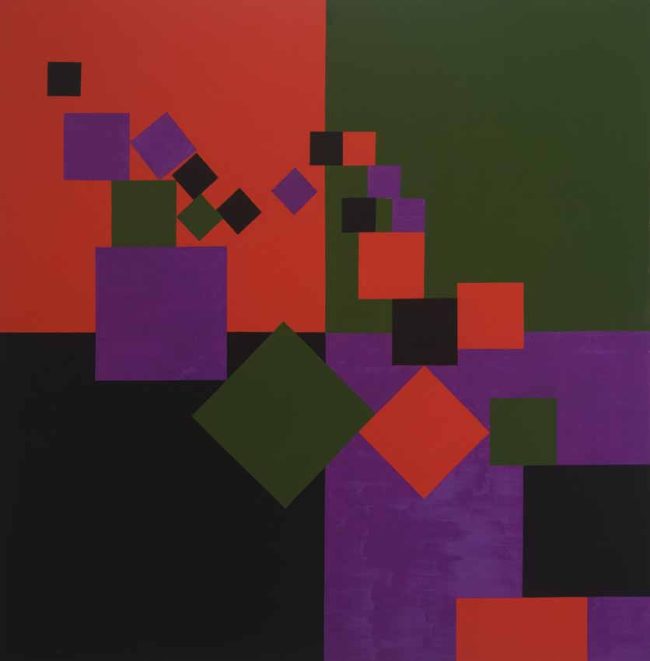Things of a Kind in Order and Disorder

Untitled, c.1967, acrylic on hardboard, 35 x 54.2 cm, BGT6176
THIS ARTICLE ACCOMPANIES THE ON-LINE DISPLAY – THINGS OF A KIND IN ORDER & DISORDER
The paintings known as Things of a Kind: Order and Disorder comprise a significant body of Wilhelmina Barns-Graham’s work made between the years 1963 and 1973. The principal motifs echo throughout all subsequent developments of her career. In purely visual terms this series was a dramatic shift away from her abstracted landscapes of the 1950s and her freely painted Spanish pictures of 1957 to 1963. This was a fresh beginning in her art arising from her personal circumstances (the annulment of her marriage) and her move into a new St Ives studio at Barnaloft. The new imagery explored colour interacting with simple geometric forms – the square and the circle. The contrapuntal arrangements of shape and colour created a vitality of visual movement which was then disrupted through the introduction of irregular rhythms, to create disorder out of order. Barns-Graham herself referred to ‘things of a kind in order and chaos’, a description that was appropriated into her picture titles.
The organisation of squares and circles was, though, by no means randomly made though the very first paintings started out by the artist laying painted cards in a regimented fashion on the floor and then nudging them with her foot. After studying the results of these nudges and their ‘accidental’ results, the arrangements were carefully crafted in quite complex constructions, often relying on invisible underlying mathematical frameworks. Indeed, the cards themselves were often employed in the making of the painting by being the method in which the pigment was applied. When lifted from the canvas or paper the card left a raised texture as the paint was pulled from the surface. Wood blocks were also used. On multiple applications colours and textures provide visual variance and variety.
There is considerable invention to be found in the series. Barns-Graham also worked in a vast range of scales from small works on paper to large canvases such as Progression (1965 – gifted by the Wilhelmina Barns-Graham Trust to Leeds Art Gallery in 2019) and Square Motive 1 (1965). These two paintings also illustrate the change of scale of the squares themselves.
As the series developed, the designs became less accidental and more precisely planned. However, unlike Op Art that was being so thoroughly investigated at that time, Barns-Graham’s painting is not so painstakingly repetitive in its formal configurations. She was much more interested in the breakdown of structure. When combined with her use of primary colours, offset against complementary secondaries, she could endow the paintings with an explosive energy, releasing into pictorial space small clusters of circular discs and tilted squares, in a joyful escape from their linear sequences.
The backgrounds play an important part in defining space and position, as well as direction. They define the nature of the spaces in which the shapes move, whether they be nebulous or presented as flat panels (coloured or plain/neutral) over which the shapes move. Where coloured they complement and blend with the dominant colour of the blocks (Dance of the Thermals, Assembly of Nine, Cinders). Where plain, the play and movement of the forms is more dominant. Split panel backgrounds came in works of 1967, and quadripartite divisions feature in the prominent group of paintings Ascending Squares of Equal Amount (1970). Nonetheless, in each case, there is no suggestion of a frame that holds the shapes within the picture plane, alluding to a continuation of that space well beyond the edges of the painting.
Following the Order and Disorder paintings the Expanding Forms series (1979 to 1983) can be seen as another part of her journey towards the dynamic expressionism of her final decade that is defined by the Scorpio Series. The dynamics of colour, form and movement consistently underly her thinking. It is clear that the Order and Disorder paintings played a vital role in the development of her art and that without this experience, her last exciting work may never have materialised in the manner in which it did.
Geoffrey Bertram
August 2020

Progression, 1965, oil on hardboard, 197.5 x 121.5 cm, Leeds Art Gallery

Ascending Squares of Equal Amount, 1970, oil on canvas, 122 x 121 cm, BGT469
